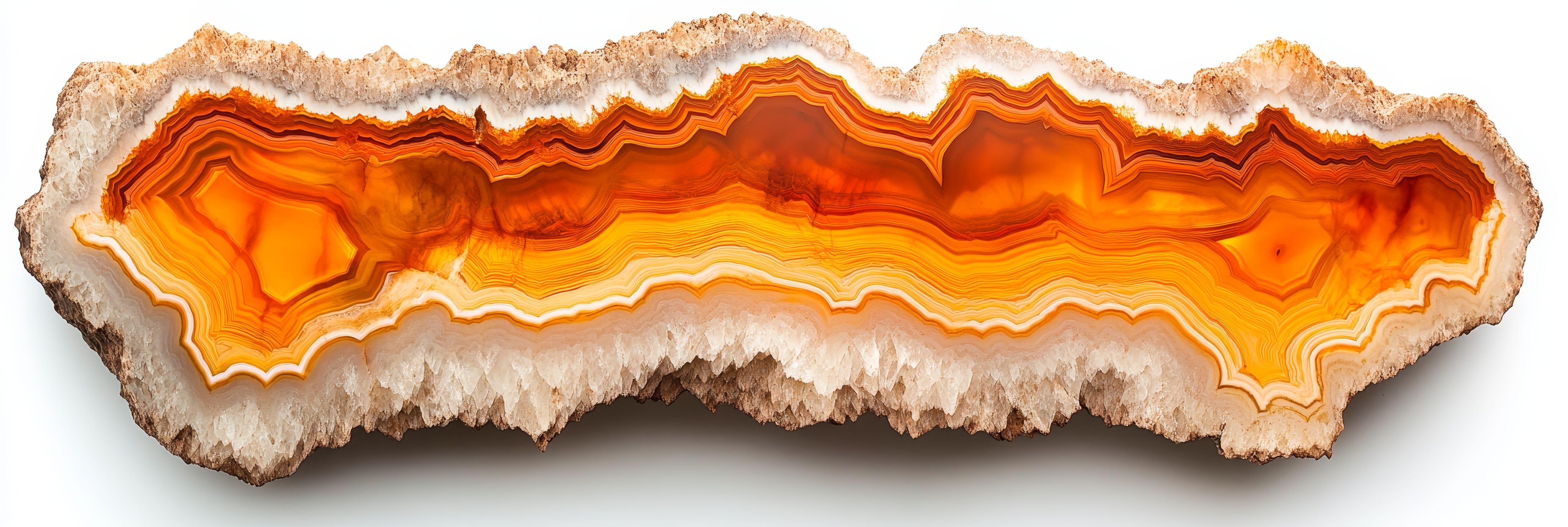Next-Gen Mineral Identification: Fusing LIBS and Raman Spectroscopy with Machine Learning
A pioneering study integrates laser-induced breakdown spectroscopy (LIBS) with Raman spectroscopy (RS) and applies machine learning (ML) to achieve exceptional accuracy in mineral identification. The combined approach not only leverages the strengths of both techniques but also enhances classification precision, achieving up to 98.4% accuracy.
Natural agate and quartz mineral gemstone ©Bundi - stock.adobe.com

Identifying minerals quickly and accurately is crucial in fields like astrobiology, geology, and metallurgy, but traditional methods can be cumbersome and destructive to samples. Recent advances in spectroscopic techniques promise to transform this process. A newly published study by Yujia Dai, Ziyuan Liu, and Shangyong Zhao from Zhejiang A&F University demonstrates how data fusion, merging laser-induced breakdown spectroscopy (LIBS) with Raman spectroscopy (RS), when coupled with machine learning, can significantly enhance mineral classification (1,2).
Details of the Work
The study, published in the journal Molecules, addresses the need for rapid, reliable mineral identification methods. Conventional laboratory techniques, such as potassium dichromate and ethylenediaminetetraacetic acid complexometric methods, are often slow and require specialized skills. Moreover, these methods are destructive and unsuitable for large-scale applications.
To overcome these limitations, the researchers employed optical spectroscopy, specifically LIBS and RS, which are known for their ability to provide elemental and molecular information rapidly (1). LIBS analyzes the elemental composition of minerals through plasma emission, while RS offers insights into molecular structures. Despite their strengths, both techniques have limitations—LIBS signals can be compromised by factors like matrix effects and environmental conditions, while RS suffers from weak signal intensity and fluorescence interference (1).
The innovative approach of this study involves integrating LIBS and RS into a single fused data system. This data fusion provides a more comprehensive view of mineral composition by combining atomic and molecular data. To visualize and analyze the spectral data effectively, the researchers used t-distributed stochastic neighbor embedding (t-SNE) to reduce the data to low-dimensional space. This allowed for clearer differentiation between mineral types. The Fisher score (FS) was employed to identify key spectral features contributing to classification (1).
The study focused on six types of minerals: strawberry quartz, jasper red, apatite, cherry quartz, southern red agate, and cat’s eye. After preprocessing the spectra, the researchers applied machine learning methods, including partial least squares–discriminant analysis (PLS-DA) and kernel extreme learning machine (K-ELM), to model the relationship between spectral intensity and mineral categories (1).
Read More: Machine Learning in Spectroscopy
Findings
The results were striking. The combined LIBS-RS data, when analyzed with PLS-DA and K-ELM, achieved classification accuracies of 97.7% and 98.4%, respectively. This high level of accuracy underscores the effectiveness of the integrated approach. Notably, the study identified specific spectral lines and bonds that are crucial for differentiating between mineral types. For instance, high-intensity lines such as CaI (610.27 nm) and molecular vibrations like CO32– (715 cm−1) provided clear separation between mineral categories (1).
The researchers also addressed the practical challenges of traditional spectroscopy methods, such as the complexity and time required for separate measurements. By using a single spectrometer for both LIBS and RS, the integrated system simplifies the process and maintains high accuracy. The study's findings highlight the potential of this combined approach to streamline mineral identification and enhance the efficiency of geological exploration (1).
Conclusions
This research demonstrates the feasibility of using an integrated LIBS-RS system combined with machine learning for mineral classification. The fusion of these spectroscopic techniques, coupled with advanced data analysis methods, offers a powerful tool for rapid and reliable mineral identification. Future research will focus on expanding the system's applicability to a broader range of minerals and optimizing the experimental setup. The development of a comprehensive database and further testing will aim to address variations caused by impurities and improve classification efficiency (1,2).
References
(1) Dai, Y.; Liu, Z.; Zhao, S. Fusion of Laser-Induced Breakdown Spectroscopy and Raman Spectroscopy for Mineral Identification Based on Machine Learning. Molecules 2024, 29 (14), 3317. DOI: 10.3390/molecules29143317
(2) Stofel, J. T.; Rao, A. P.; Patnaik, A. K.; Giminaro, A. V.; Shattan, M. B. Analysis of Lithium Aging Using Machine Learning-Enhanced Spectroscopy Techniques. Appl. Spectrosc. 2024, 78 (8), 00037028241235679. DOI: 10.1177/00037028241235679
Best of the Week: AI and IoT for Pollution Monitoring, High Speed Laser MS
April 25th 2025Top articles published this week include a preview of our upcoming content series for National Space Day, a news story about air quality monitoring, and an announcement from Metrohm about their new Midwest office.
Nanometer-Scale Studies Using Tip Enhanced Raman Spectroscopy
February 8th 2013Volker Deckert, the winner of the 2013 Charles Mann Award, is advancing the use of tip enhanced Raman spectroscopy (TERS) to push the lateral resolution of vibrational spectroscopy well below the Abbe limit, to achieve single-molecule sensitivity. Because the tip can be moved with sub-nanometer precision, structural information with unmatched spatial resolution can be achieved without the need of specific labels.
Smarter Sensors, Cleaner Earth Using AI and IoT for Pollution Monitoring
April 22nd 2025A global research team has detailed how smart sensors, artificial intelligence (AI), machine learning, and Internet of Things (IoT) technologies are transforming the detection and management of environmental pollutants. Their comprehensive review highlights how spectroscopy and sensor networks are now key tools in real-time pollution tracking.
New AI Strategy for Mycotoxin Detection in Cereal Grains
April 21st 2025Researchers from Jiangsu University and Zhejiang University of Water Resources and Electric Power have developed a transfer learning approach that significantly enhances the accuracy and adaptability of NIR spectroscopy models for detecting mycotoxins in cereals.